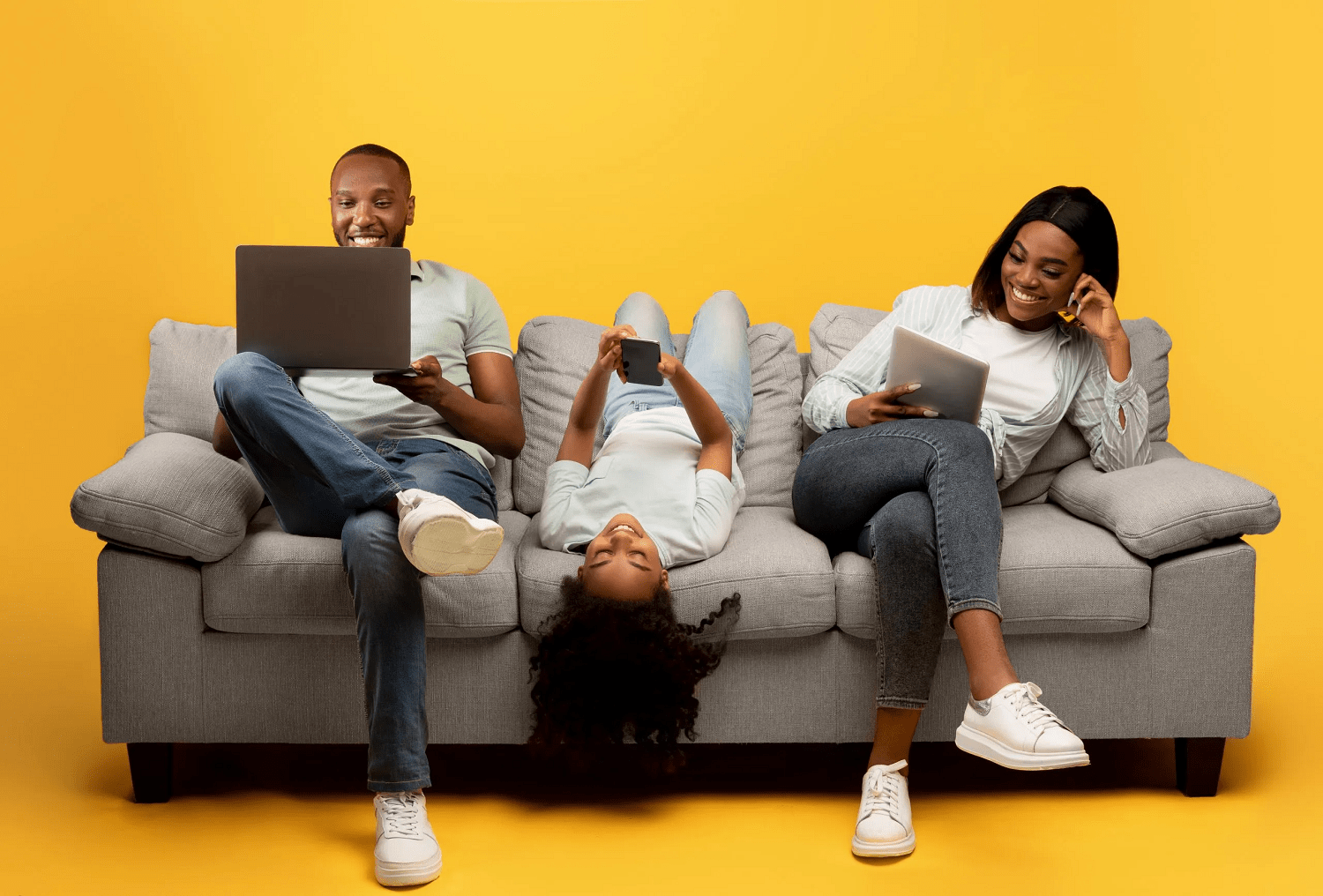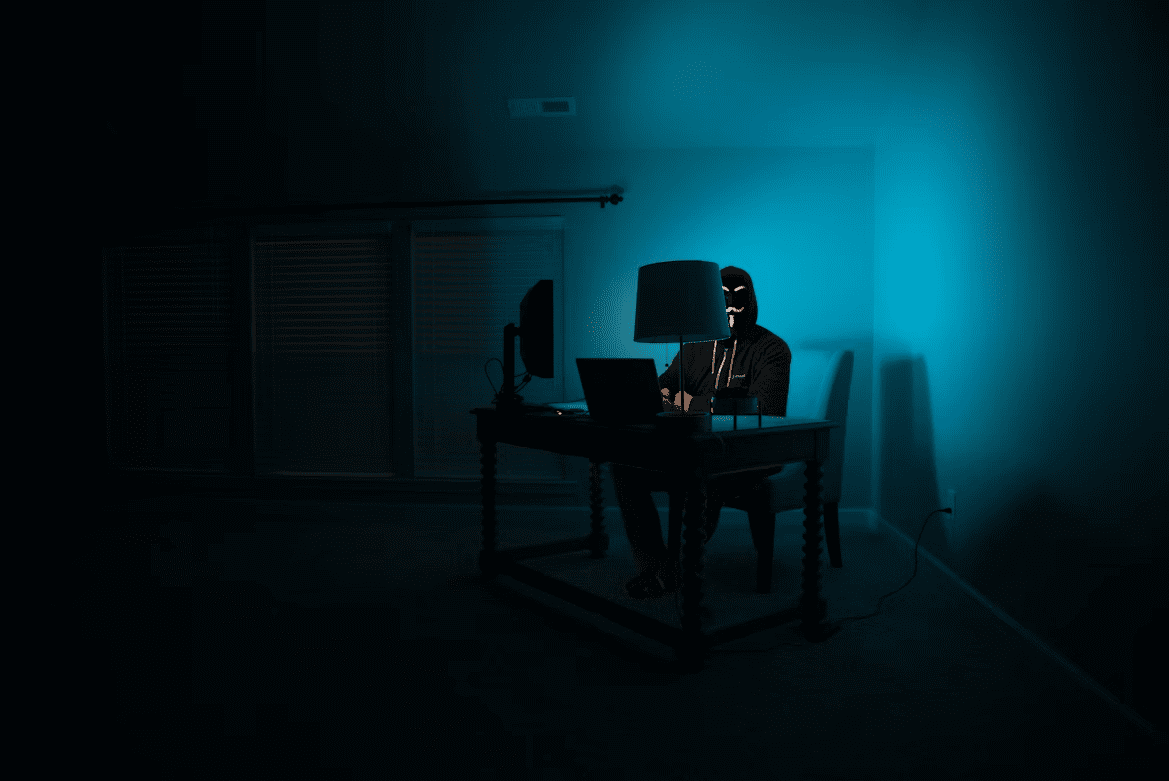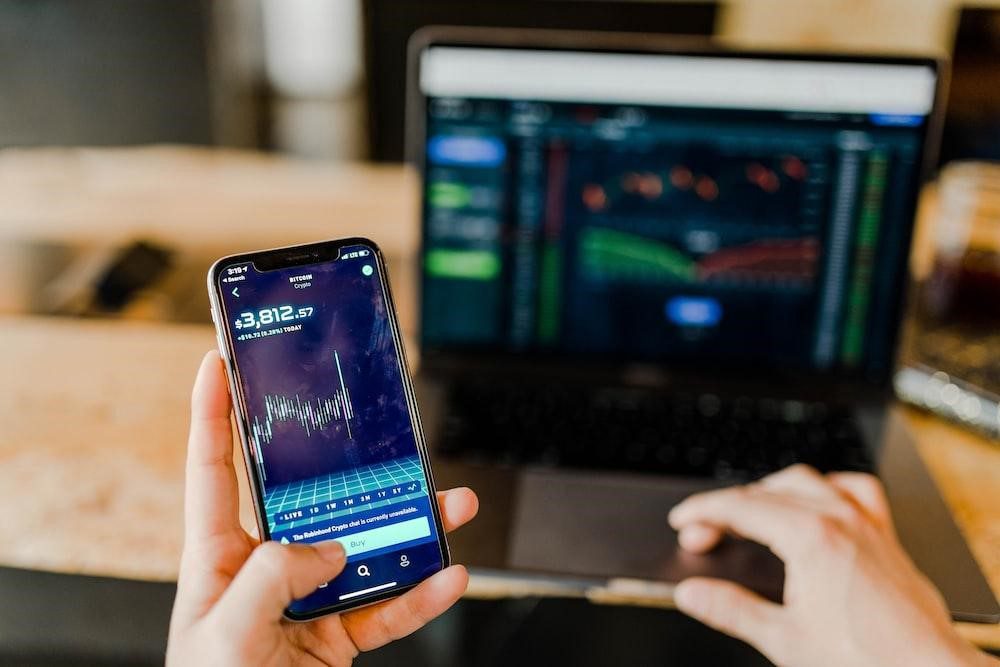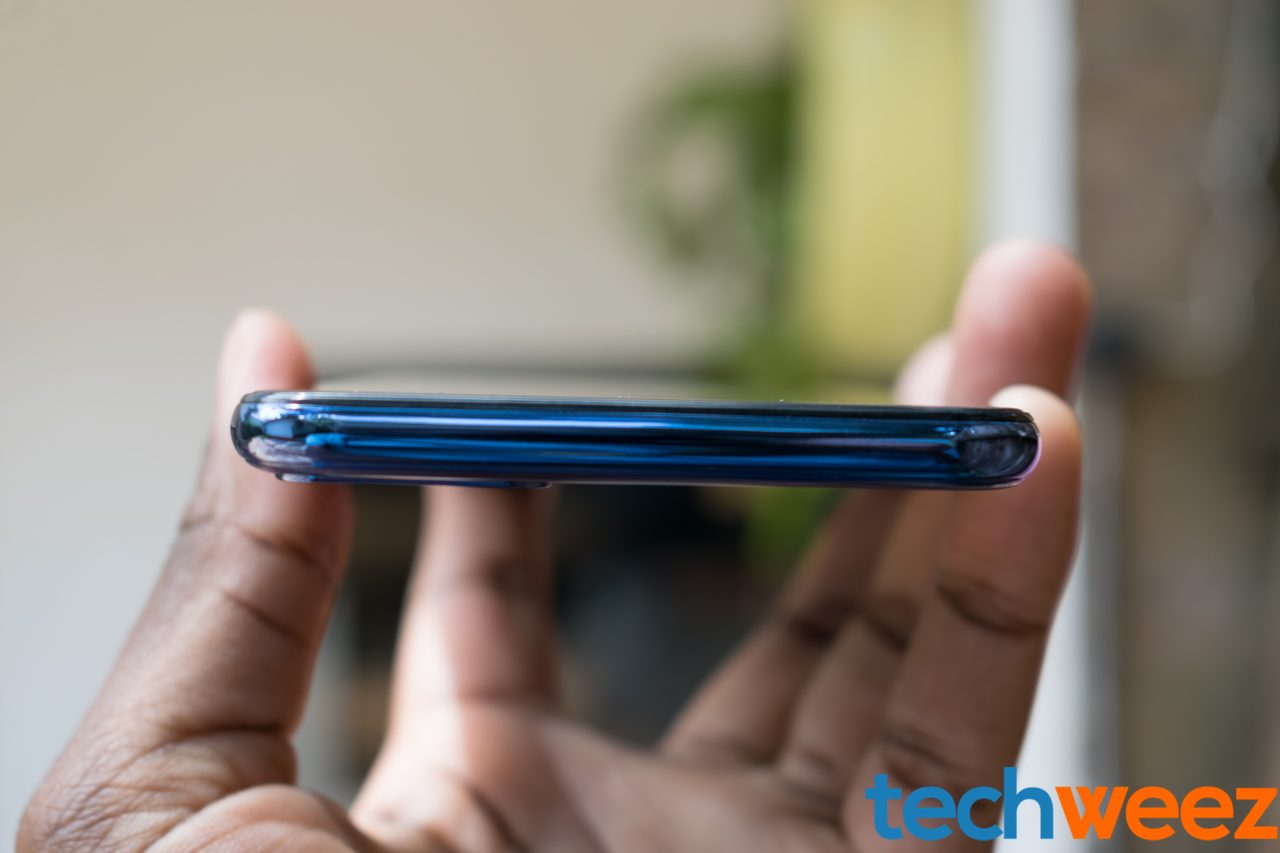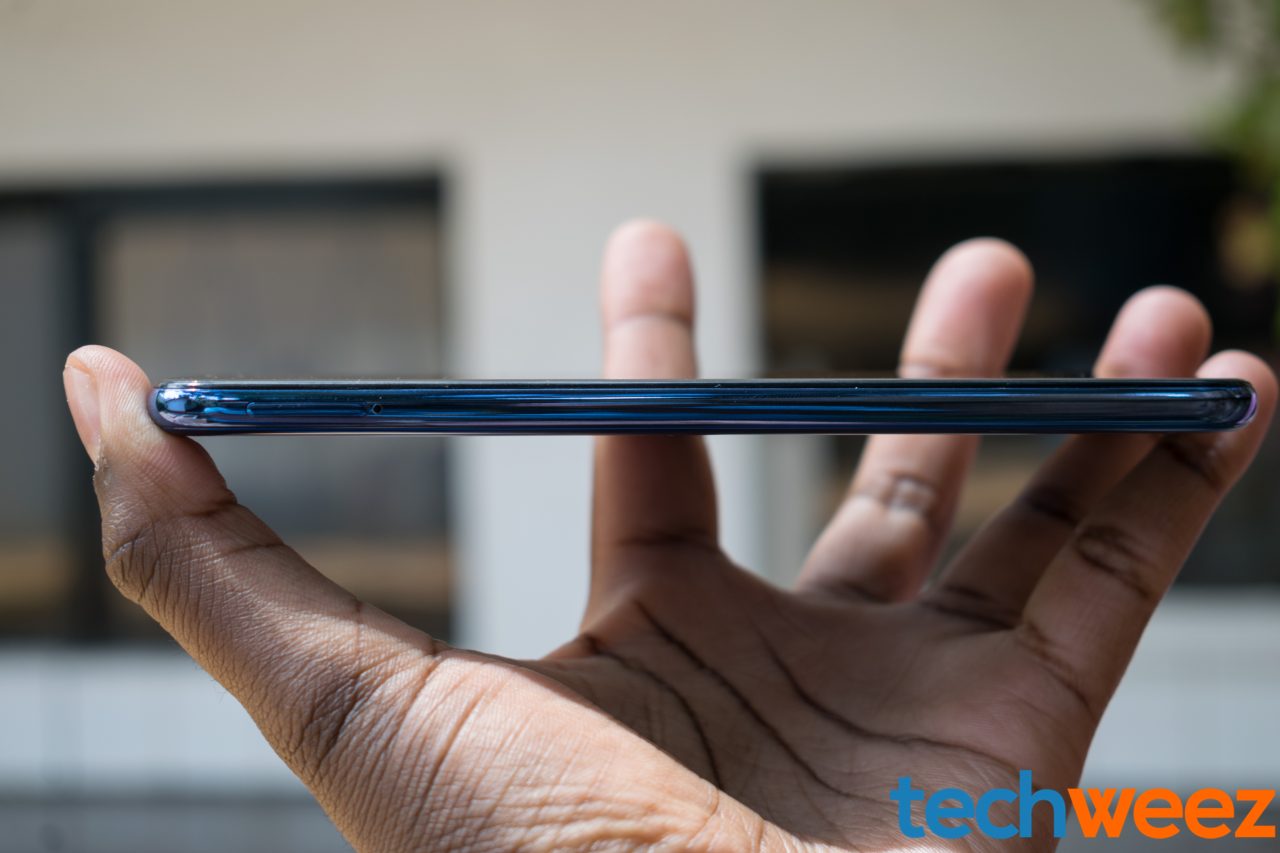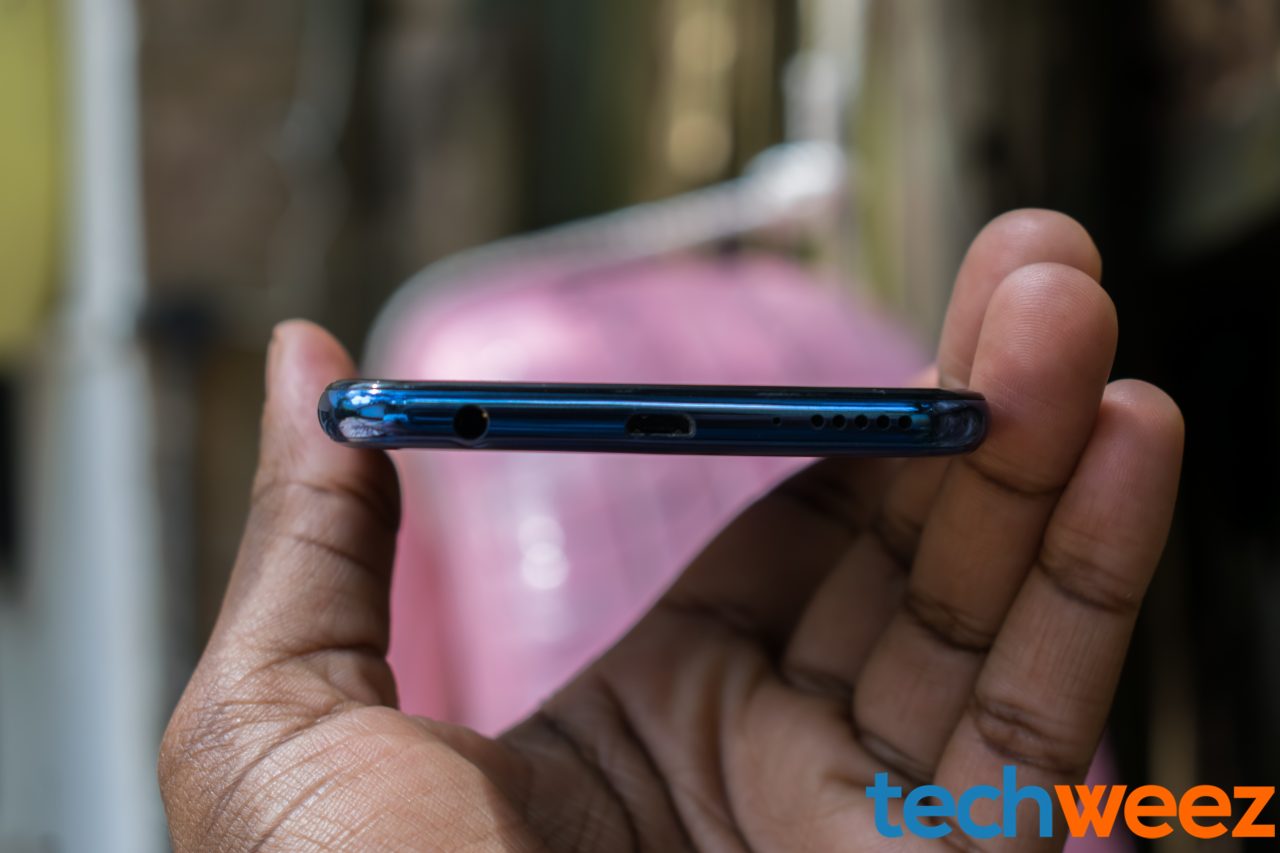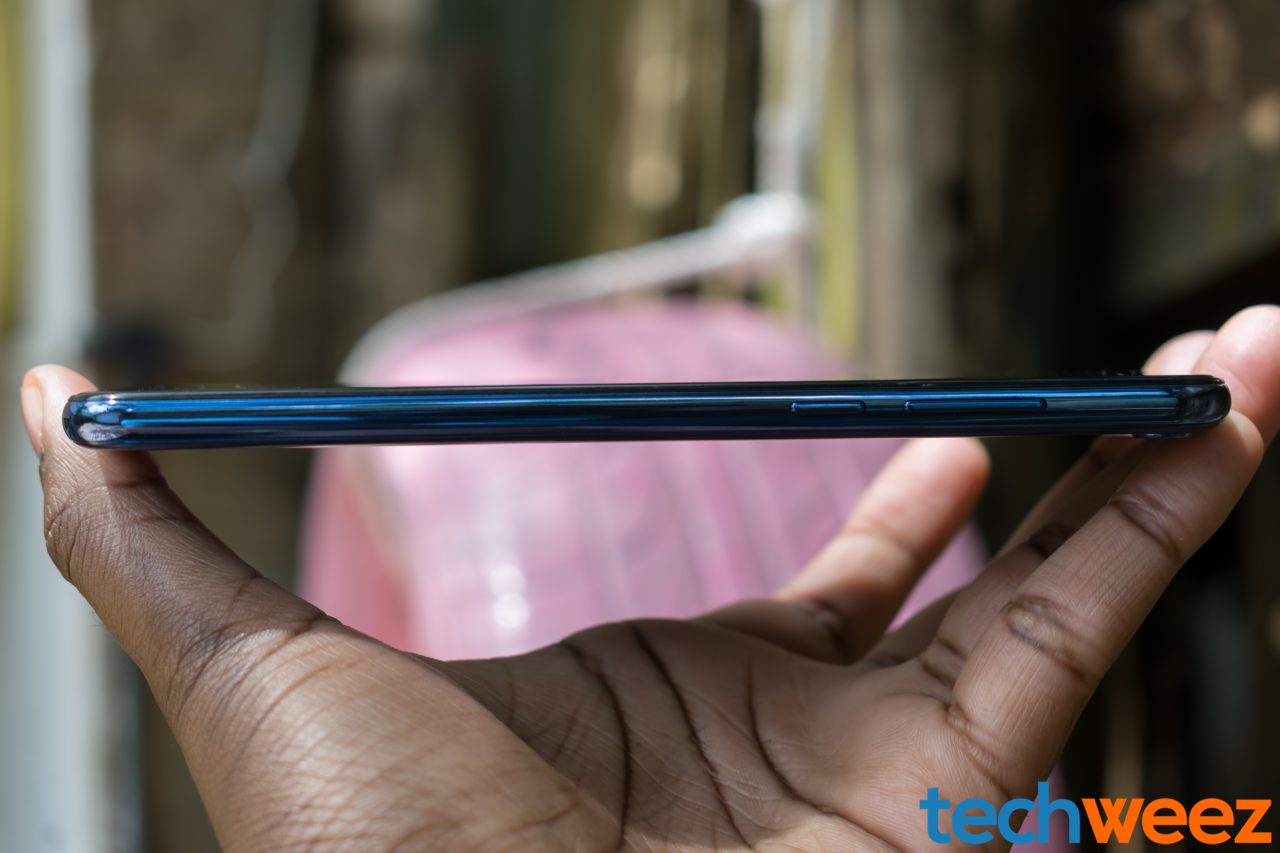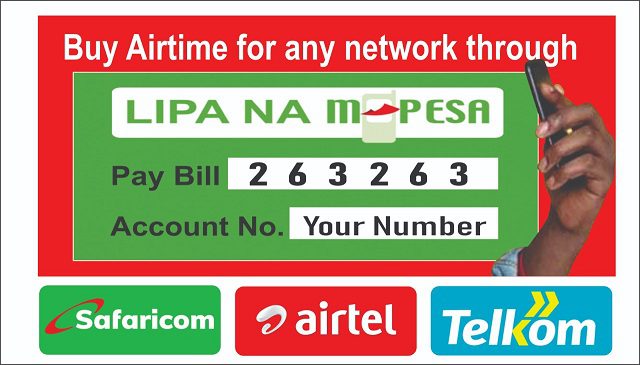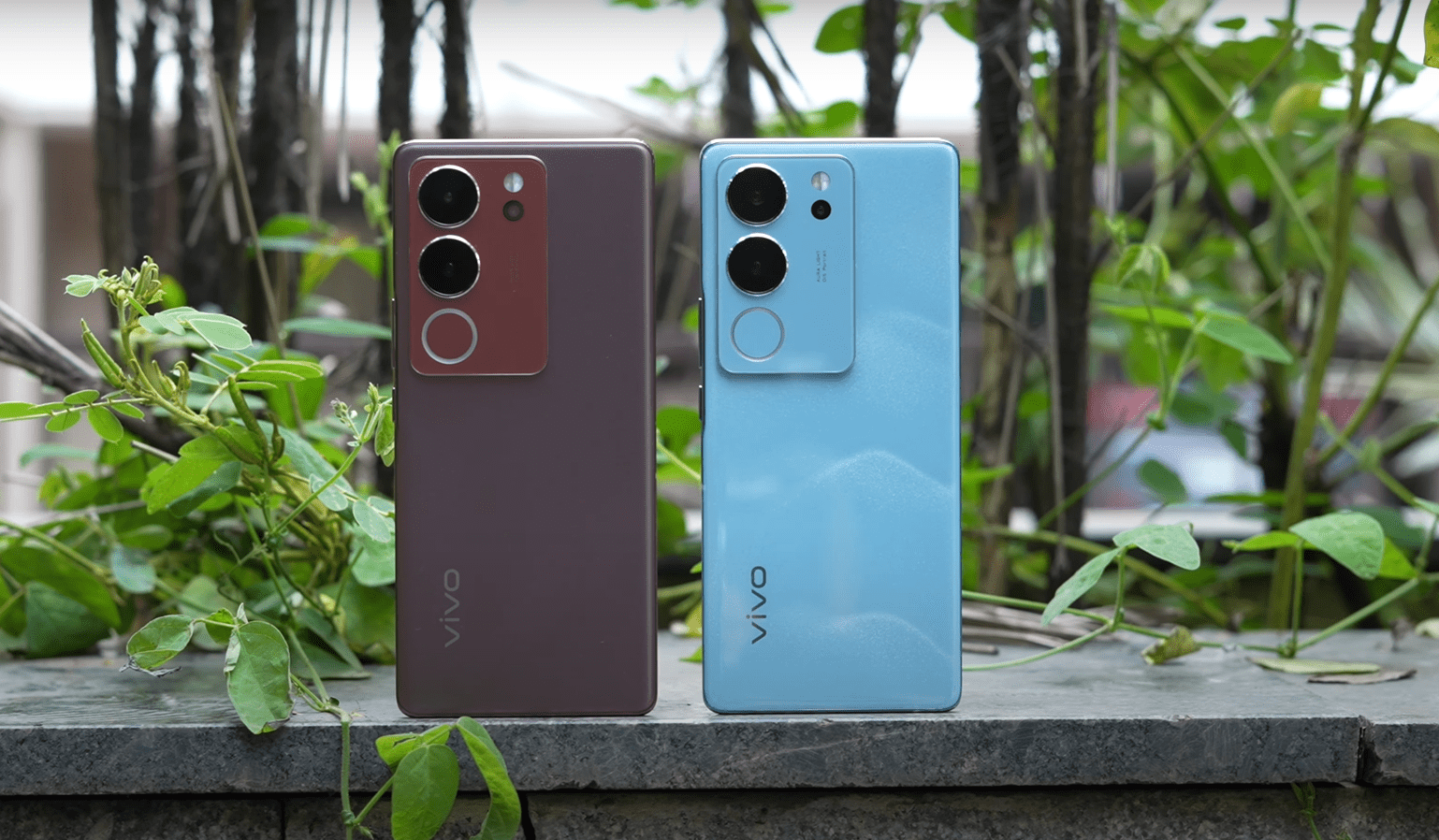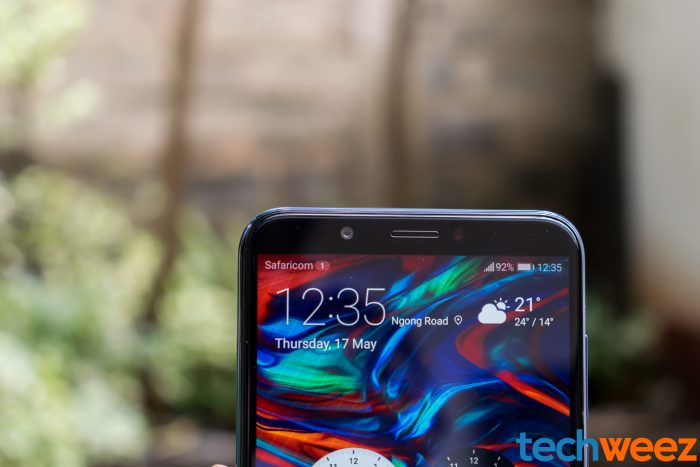

The Huawei Y7 Prime is an interesting value proposition from Huawei. It brings to the budget segment an 18:9 display, dual rear cameras with portrait mode and Android 8.0 Oreo. I’ve been using this phone for close to two weeks now and here is the review.
Huawei Y7 Prime 2018 Specifications
Design
When I first took the phone out of the review box, it looked stunning. The stunning blue back with the contrasting black front work rather well. The front houses the giant 6 inch diagonal 18:9 display with a resolution of 1440 x 720. The Huawei logo is at the bottom and the usual earpiece, the 8MP front facing camera and the usual proximity and light sensors are at the top.
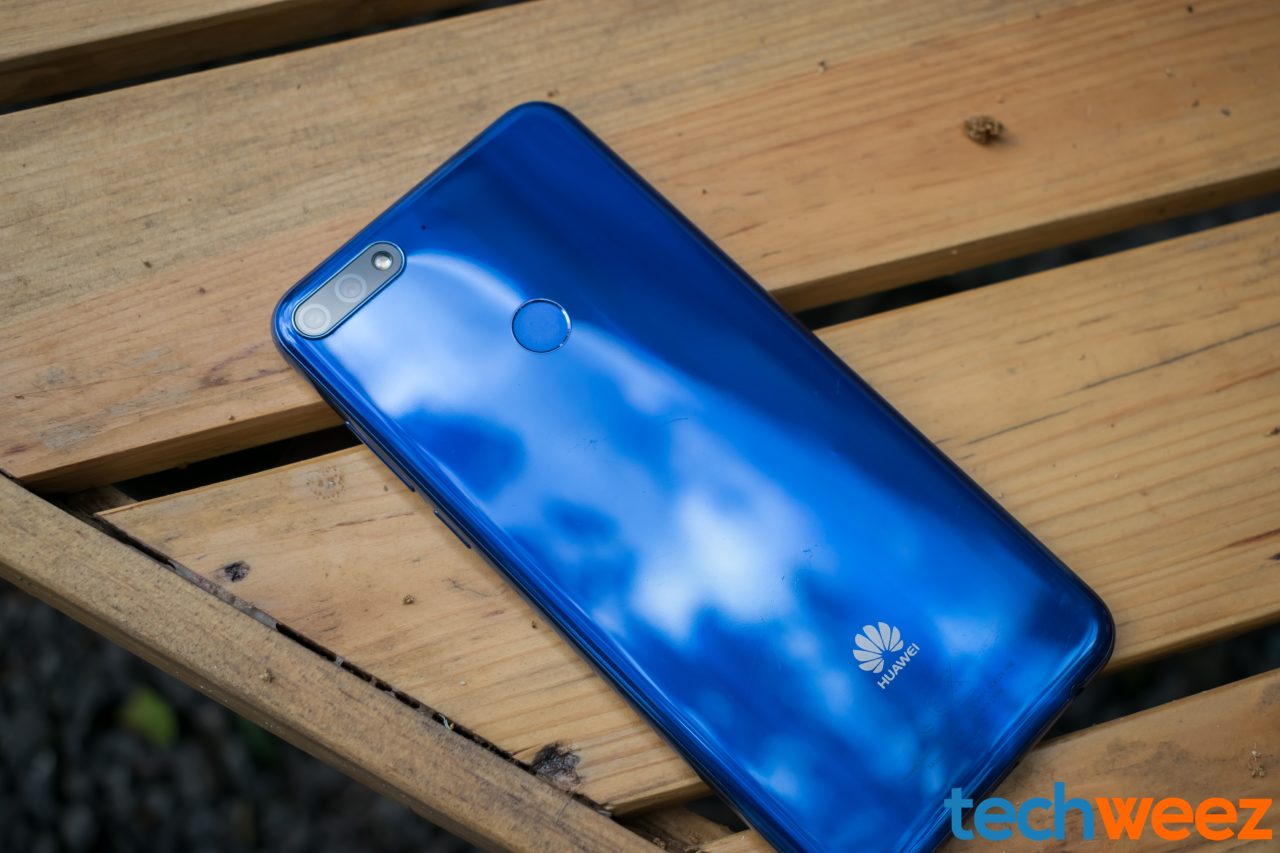

The striking blue back houses the primary dual cameras and the LED flash which are enclosed under glass. There is another Huawei logo at the bottom. The choice of plastic to build the phone works well here and I suspect the antennas are hidden along the sides. The dual SIM/microSD card combo are on the left side and the volume rocker and power buttons are on the right. The power button is a bit too high for my taste for my average sized hands.
Nevertheless, the phone feels great in the hand and rather solid albeit it is made from plastic and glass. The smooth edges don’t dig to your palm and the fingerprint scanner is well positioned for your index finger to unlock the device.
The display
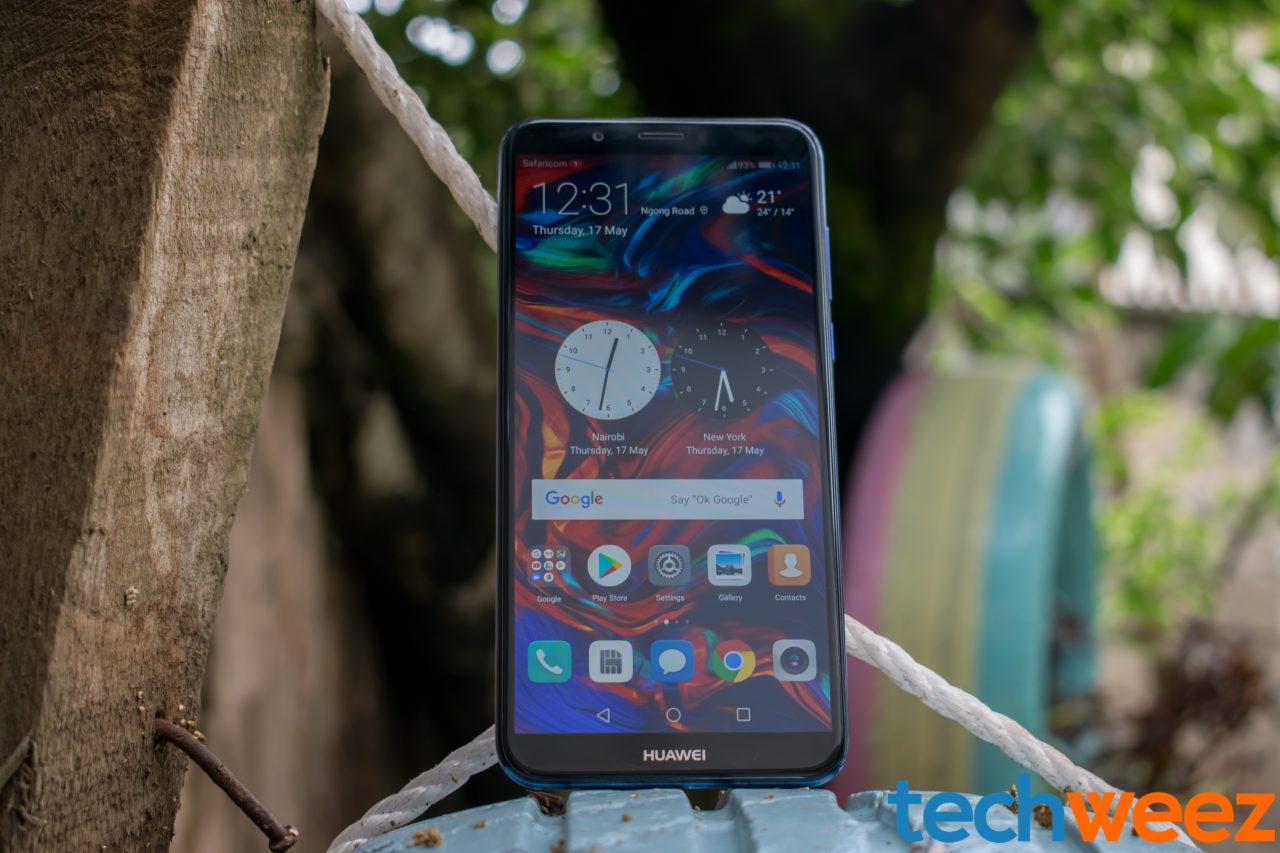

Following the trend of offering 18:9 displays to the masses, the Y7 Prime 2018 has a 6 inch 1440 x 720 display. It gets reasonably bright indoors but it suffers outdoors even at full brightness. It came with a built in screen protector, which I removed, but most people will keep it on nonetheless.
You can tweak the display to your liking by either turning on eye comfort (which is a native Oreo feature) to get rid of the blue light for use at night, or even tweak its white balance (either cooler or warmer). During the day, this display does not get bright enough to see, which is a bummer.
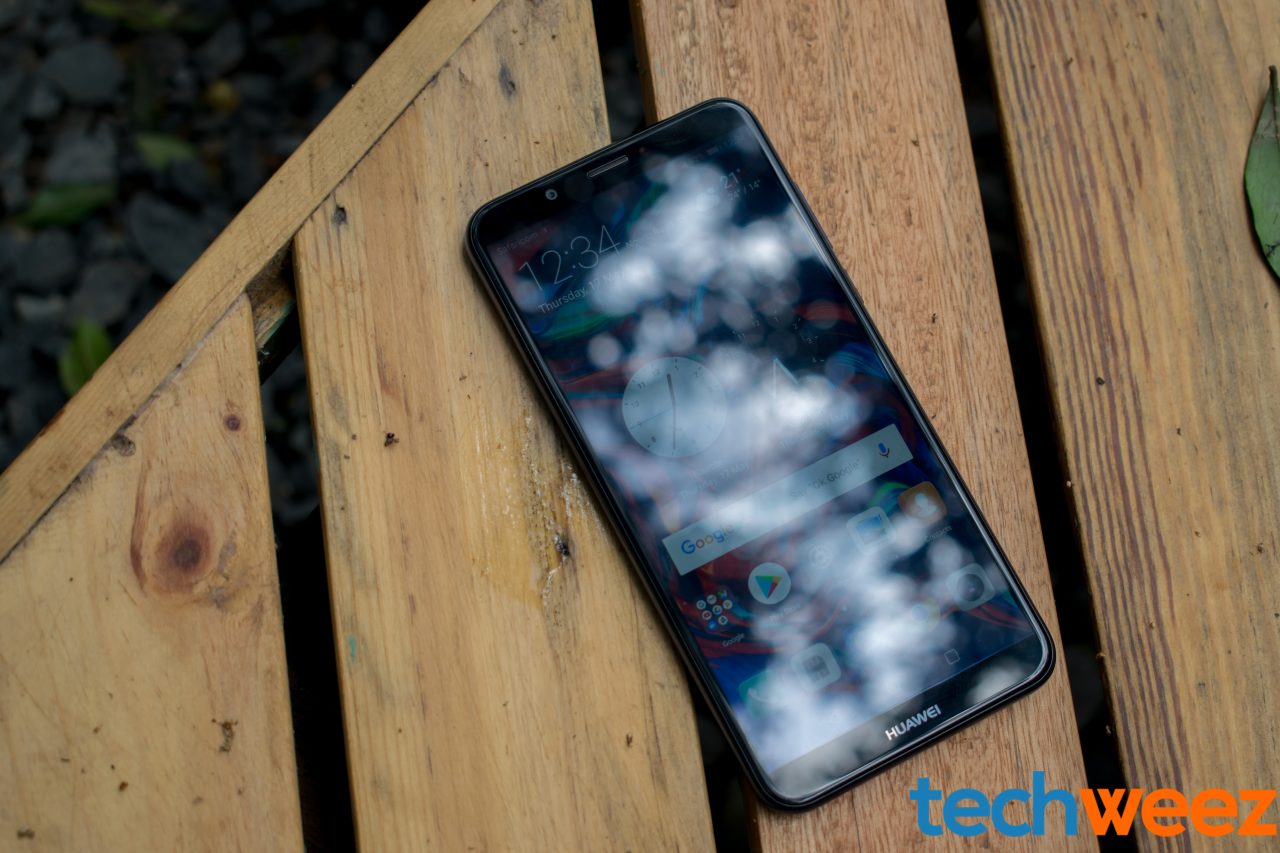

18:9 displays are perfect for multitasking using multi-window where each app is rendered in neat squares of 720 x 720 pixels each. However, some apps are still not optimized for multi window and can make the experience inconsistent.
User Interface
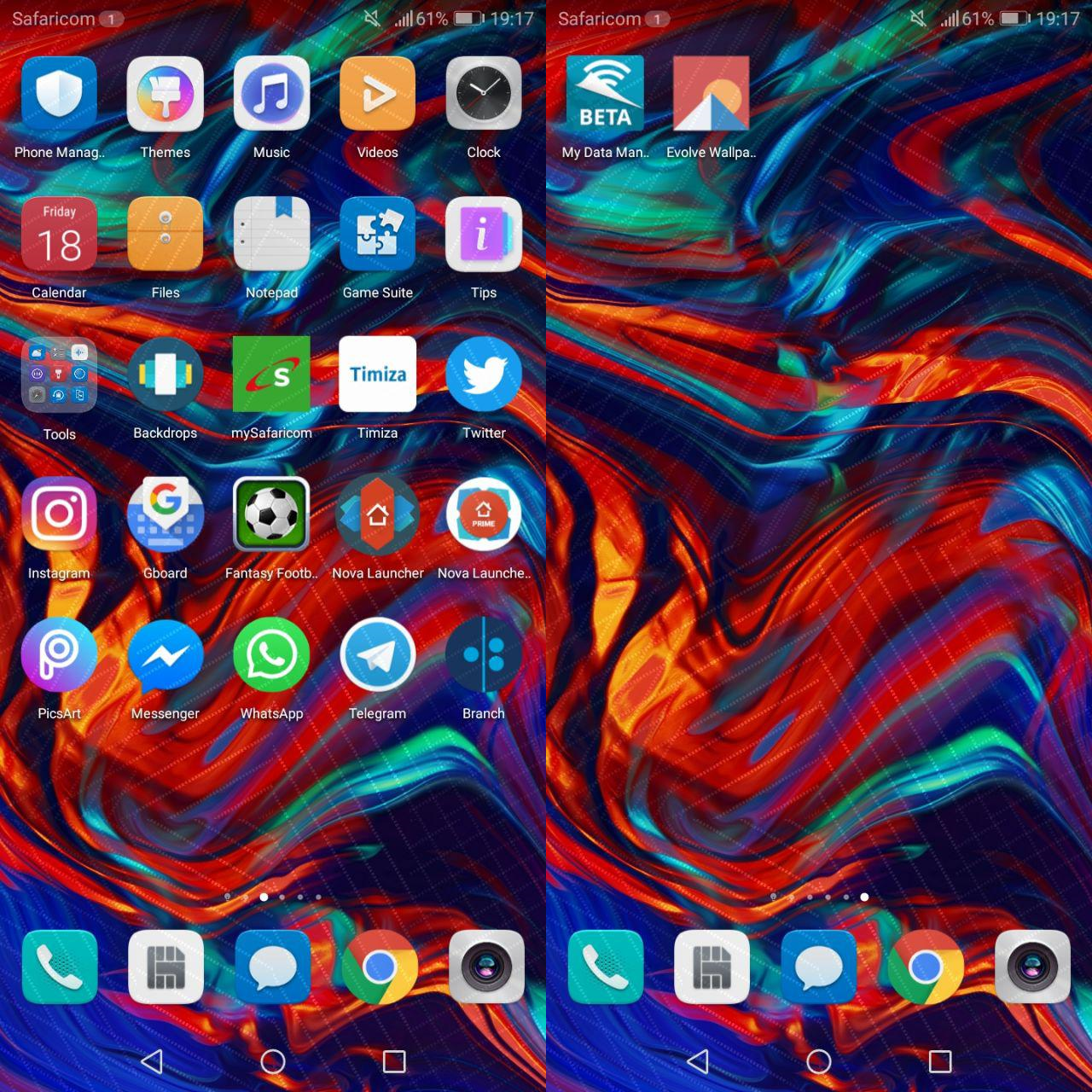

The Huawei Y7 Prime 2018 has Android 8.0 Oreo which is the latest Android release save for Android P which is still in beta. Huawei’s own EMUI 8.0 runs on top of Oreo and this skin is a preference issue. Personally, I don’t mind it but if you don’t like it, you can just download Nova and use it instead.
EMUI’s default launcher involves apps being shown within the various homescreens like what we see on iOS. Personally I like this since going to an app drawer is a step too much. However, you can add an app drawer if you want under ‘Home screen style’ under display settings.
One thing I like about the skin is that it doesn’t change how third party icons look like. You see this on launchers on phones by other companies. Huawei’s own apps are not hard to identify and they ones borrowed from Google (messages, calculator, downloads e.t.c) look different from the stock Android versions.
The Android ‘back’, ‘home’ and ‘menu’ buttons are the right way unlike other manufacturers who like switching the back and menu virtual buttons.
There are some neat tricks from EMUI. App lock is my favourite, where it allows you to lock apps with your fingerprint to prevent unauthorized access. It has a screen recorder that shoots in 1280 x 640 resolution which is handy. The gallery shows a histogram and detailed metadata of your photos (ISO, shutter speed, exposure compensation etc) that appeases the photographer in me. The notification shade is full of settings you’d need to a point you never need to dig down to settings.
Performance
The Huawei Y7 Prime 2018 has an octacore Snapdragon 430 with 3GB RAM and 32 GB of internal storage.
This combination should ensure that you get a consistent smooth experience but my experience is a bit different. I suspect I have pre-release software (It shows EMUI 5 instead of 8, yet it has Oreo) so the random hang-ups I get could be due to this. However, these are rare and the phone runs quite well with the hardware.
The cameras
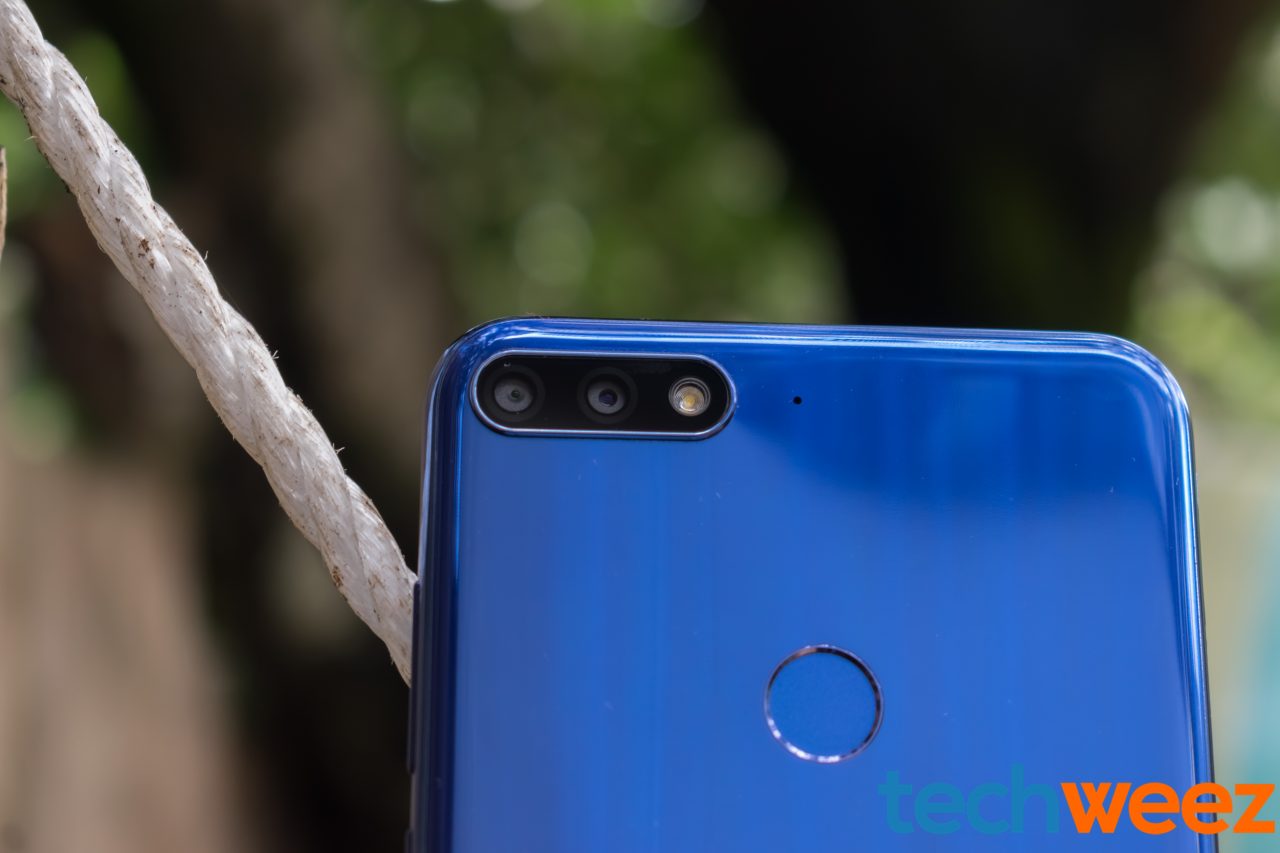

The Y7 Prime has 3 cameras: A 8MP selfie camera with a f/2.0 lens, 13MP primary camera with a f/2.2 lens and a 2MP ‘sidekick’ camera that aids in portrait mode duties.
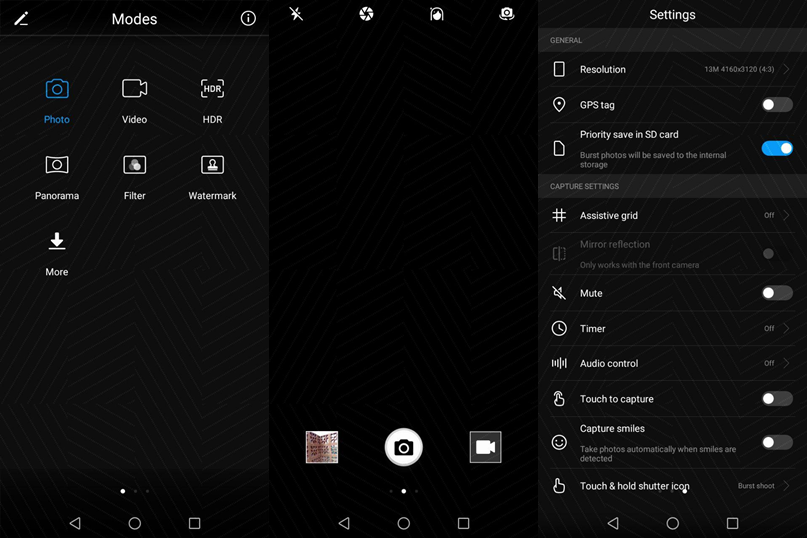

The user interface is typical Huawei. The album, camera shutter button and video record buttons are on the bottom while the flash, wide aperture mode, beauty mode and camera switch toggle are at the top.
You can also swipe along the interface, where a left to right swipe reveals the modes available (Photo, Video, HDR, Panorama, Filter, Watermark and more), while a right to left swipe reveals the general camera settings.
On normal mode, the primary 13MP camera shoots photos that are heavy on contrast, which are good for the odd sharing on social media. The flash is not the brightest I’ve seen but it works on subjects that are close by.
Wide aperture mode is Huawei’s ‘portrait mode’ and we have seen it employed on their higher end models. In traditional cameras, the ‘wider’ the aperture, the shallow depth of focus which makes subjects pop while their backgrounds disappear in a blur. Wide aperture tries to emulate this.
Under wide aperture mode, at the bottom left above the video button, you can set how much blur you want in your photo.
However in order for it to work, the subject has to be quite far away and here are some shots taken in this mode.
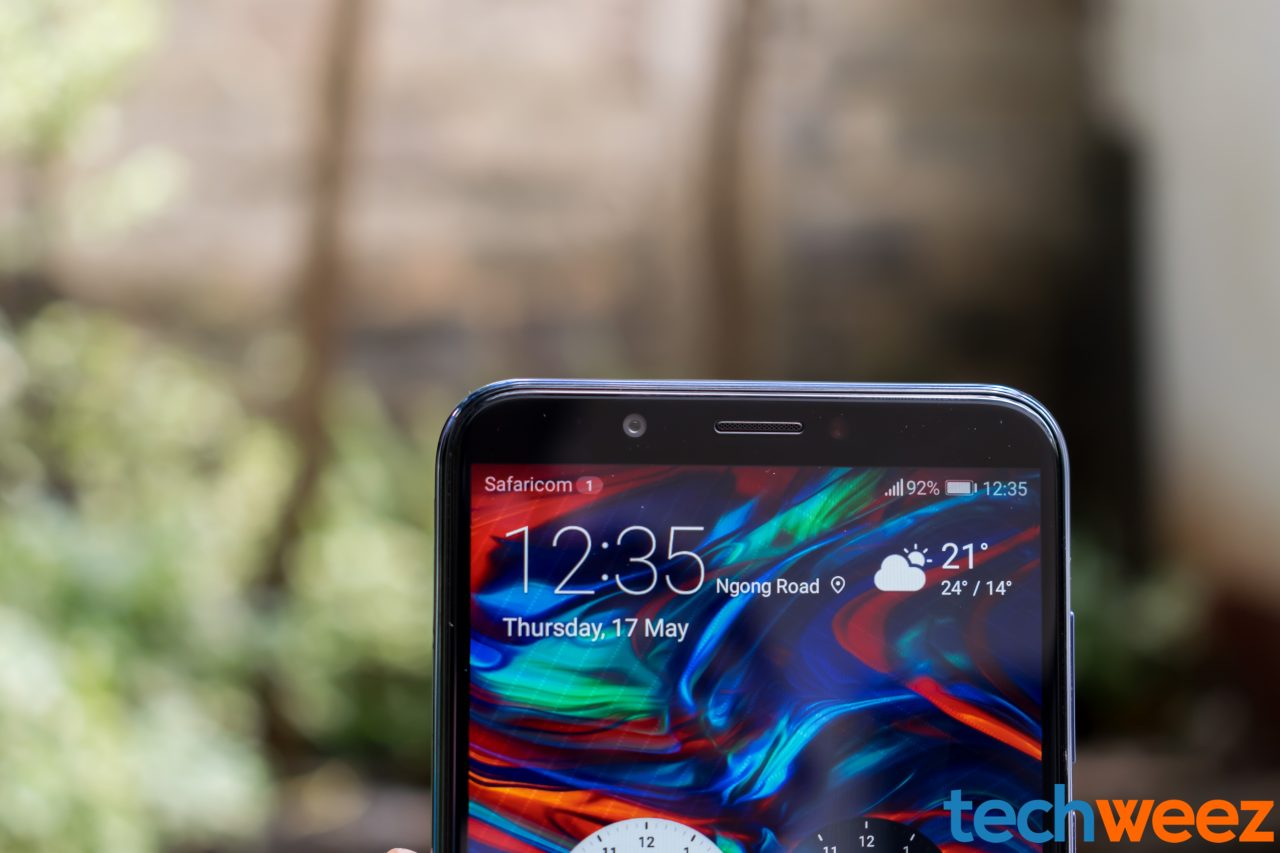

The selfie camera is an 8MP unit and interesting enough, it features a flash! This flash is useful for low light selfies and even when taking a video. It is sad that you can’t use this while video chatting away on Messenger or WhatsApp and I would have liked if this was implemented later
The primary cameras shoot videos upto 1080p at 30fps, which has become the standard for a while now. The selfie camera has face tracking, which is neat to keep your face in focus, but sadly it only shoots videos upto 720p, which is behind the competition at this price.
Battery life
This was one area I was concerned about. The Y7 Prime 2018 has a 3000mAh battery which is to be used by the giant 720p screen and the octa-core Snapdragon 430 processor.
However with normal usage, I could easily get over 5 hours of screen-on-time with this phone and I’ve never ended up recharging midday on a work day. However on heavy usage days, my screen on time figures hovered around 4 hours, which is still great considering my location was on all the time and auto sync was enabled for emails.
This could be attributed to Huawei’s aggressive battery saving tactics where EMUI constantly reminds you that an app is using more power in the background. You can disable this feature under settings if you find it annoying.
The phone has battery saving features thanks to a dedicated Power saving mode and an Ultra power saving mode depending on our needs. It can also lower the screen resolution to help you even save more power.
General phone functions
The Huawei Y7 Prime doesn’t have fast charging so it charges rather slowly with the included 1 amp charger in the box.
Wi-Fi performance is great and I’m not surprised since Huawei is in the networks business and it is shown here. GPS locks fast and easy when you want to hail a cab or plan your routes and the phone calls are quite clear.
This is a dual SIM phone and SIM 1 supports 2G/3G/4G while SIM 2 is limited to 2G & 3G. Under settings, you can set which sim you’d want to be the default one for mobile data as well as the default calling SIM.
Notifications and calls are loud and clear thanks to the loud downward facing speaker.
Conclusion
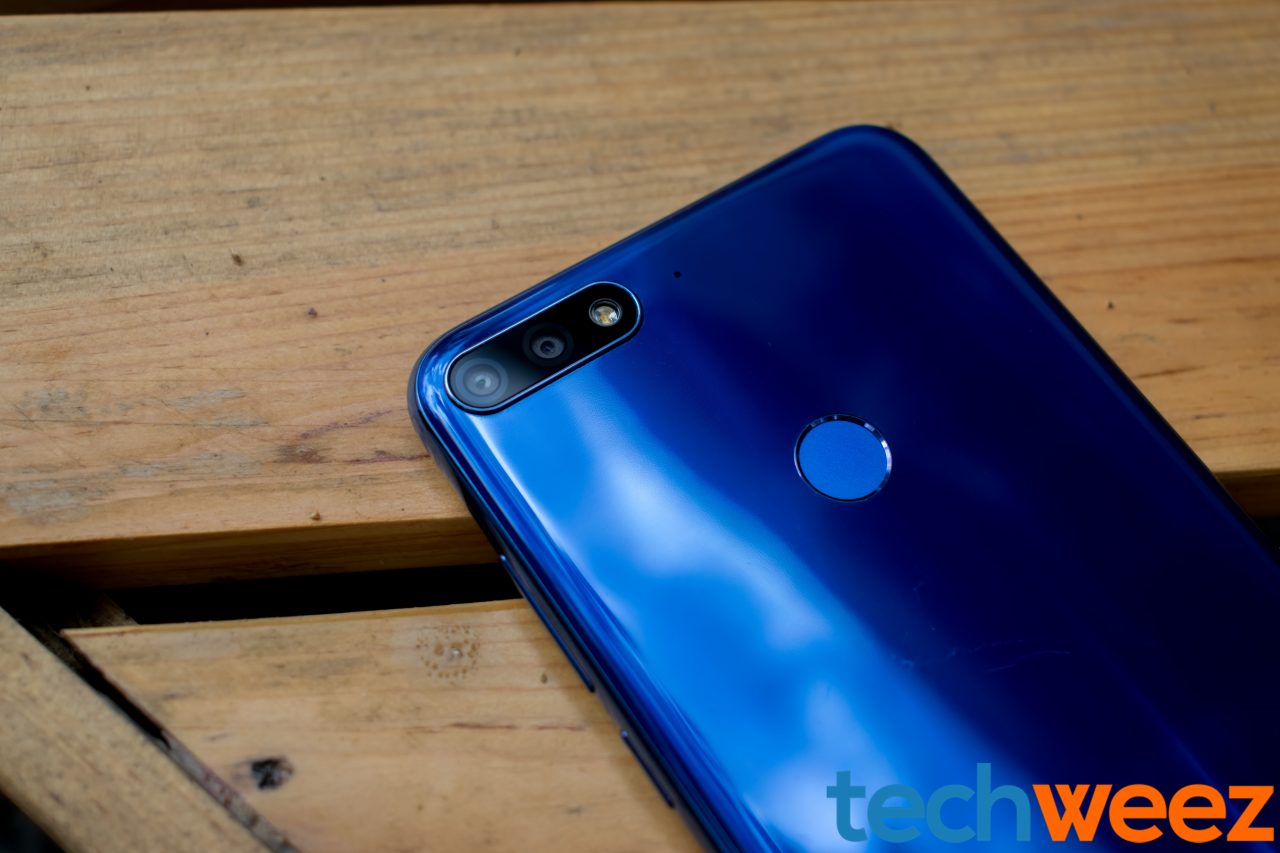

For KES 17,000, I have very few things to complain about here. The battery life is good, feels great in the hand, the fingerprint scanner is incredibly responsive, has an FM radio, app lock is amazing and the 18:9 display is great for multi-window. However, things like portrait mode are a little bit finicky on this phone and it could maybe be a one time case since my phone is running on pre-release software.

